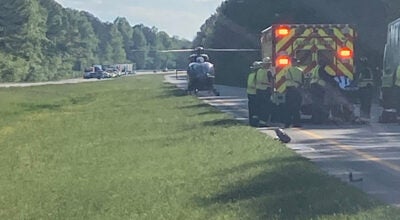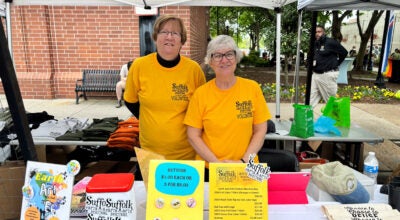Teens look to prescriptions for new thrills
Published 9:52 pm Saturday, June 6, 2009
There is a rising trend in teenage drug use, and it is lurking in your medicine cabinet.
According to the National Clearinghouse for Alcohol and Drug Information, the number of teen and young adult abusers of prescription painkillers has grown by more than 500 percent since the mid-eighties.
That national trend can be seen here in Suffolk.
“We are seeing a greater increase in prescription drug use, especially since we have been expanding our youth services,” said Anita Morris, child and family service coordinator for the Western Tidewater Community Services Board. “These kids we are talking about are under age, so they can’t go to the store and buy alcohol. If you buy marijuana, you buy the risk of being arrested of drug possession, but if you go to the parent’s medicine cabinet and open it, you have more at your fingertips, without the risk of getting into trouble.”
Last week, Narconon Arrowhead released the results of a National Center on Addiction and Substance Abuse survey that showed more than a third of drug-using teenagers ages 12 to 17 said they have abused prescription drugs found in their parents’ medicine cabinet.
Another one-third of those surveyed said they were given prescription drugs from friends or peers at school.
“If the third of kids using meds got them from parent’s medicine cabinets, it doesn’t take rocket science to figure out where the third of the students who were selling prescription drugs to the other kids are getting them from,” Gary W. Smith, CEO of Narconon Arrowhead, said in a press release. “That means that over half the teenagers surveyed abusing prescription drugs were getting them directly or indirectly from Mom and Dad’s medicine cabinet.”
Morris said parents need to step up their communication with their children in order to keep this problem from happening in their home.
“These kids are on the phone. They are on the Internet. They are texting more than they are verbally communicating,” Morris said. “It has to be old-fashioned, sitting down with the kid and asking them, ‘What did you do today? What types of things did you learn in school today? What are you doing this weekend?’”
Communication from parents is also vital when it comes to discussing the risks associated with drug use, because it can play a role in keeping children away from drug use altogether.
According to the NCADI, research shows that children who learn about drug risks from their parents are only half as likely to use drugs than children who have not spoken about drugs with their parents.
Additionally, Morris said, it is becoming more and more vital that parents and community leaders engage children with positive activities and outlets for their emotions.
“An idle mind leads to trouble,” Morris said. “We don’t want our youth to have time on their hands to where they’re either going down the wrong road and they are abusing drugs or get involved in other criminal activities and end up in our system.”
Interestingly enough, Morris pointed out, the young people are the ones telling the WTCSB how desperate the need is for substantive recreational opportunities.
Currently, in Isle of Wight County and more rural parts of Western Tidewater, the board is holding a series of focus groups with young people regarding how to avoid drug and alcohol abuse.
Morris said that time and again, the students ask for more options.
“We had students from Windsor High School clearly present that they were in need of some sort of structured activity,” she said. “We as the adults in the community really need to start listening to what these are kids are saying. It’s all about the options.”
While building communication and the child’s after school activities are good steps, Morris said there are even more simple and practical ways to help keep children away from prescriptions.
“Safeguard them,” she said. “Keep your prescriptions in a cabinet that may be locked or harder for children to find.”
She added that parents should also keep track of how many pills they consume versus how many pills they have left. For instance, if parents have a prescription for pain management that they use sparingly, then they should check with children if the bottle is significantly emptier than they recall.
Morris also recommended speaking with a doctor or pharmacist when receiving a new prescription to learn all dangers or habitual effects of the drug.






